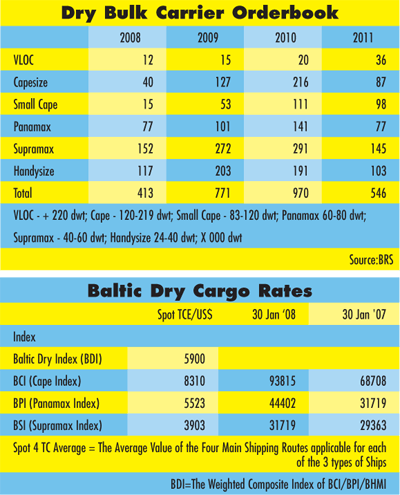
Dry bulk freight rates fall: What’s next?
Since mid-December the dry cargo freight rates have been in a free fall. The reasons are varied ranging from port congestion woes, disruption in the production of key bulk freights and widespread economic fears, starting with the US. The bulk shipping market, and indeed shipping in general, has always been thought of as cyclical. But is this a phase or a trend? Is the rate fall a dip or a depression?- By George Lauriat, AJOTThe Baltic Exchange Dry Index (BEDI), a measure of the spot charter rates for the combined tonnage sizes of bulk ships, has for two years been rising hitting 11,039 November 13th 2007. On January 17, falling 443 points or 6.4%, the largest single day decline. On January 18, the BEDI stood at 6,462 points, compared with 9,143 points at the end 2007. With the decline in the US stock market and the general economic jitters globally, is the decline in spot charter rates part of an overall economic trend, a genuine economic trend or simply a momentary dip in an otherwise healthy market?







